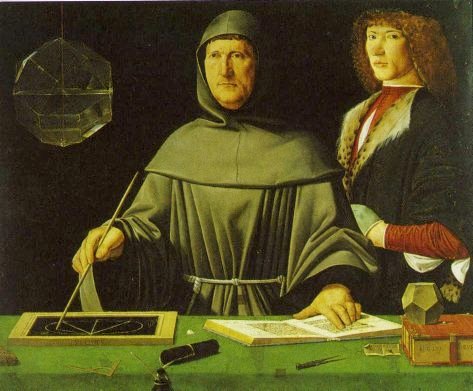It appears that a man called Albert of Saxony wrote a little treatise in 1350 consisting of various proofs and assertions on the possibility of squaring the circle. His book was called Quaestio de quadratura circuli (Question on the Quadrature of the Circle), and he made some pithy observations such as the following:
If there could not be given a square equal to a circle, it would follow that there would take place passage from "greater" to "lesser," or from extreme to extreme, through all the means without ever arriving at "equal" or "middle." But this is false. Therefore, I prove the consequence. For let there be one square inscribed in a circle and let this square begin to be continually and uniformly increased until it becomes larger than the circle. If, therefore, it was at some time equal to the circle, we have the proposition; if not, then passage has been made from "lesser" to "greater" with respect to that circle without ever arriving at "equal."1
Now I won't claim that this is absolutely rigorous, although it's fairly clear that if you assume that a square can be stretched continuously, then a square inscribed in a circle will at some point exceed the size of circle, and a fundamental consequence of continuity is that it will do so without any sudden breaks. So, in fact, there is a square with exactly the same area as a given circle.
We know this is true. If the area of a circle with radius r is π r2, then the side of the square with the same area will be r√π. Every real number has a square root, so we are good here.

The question that Albert was hoping to answer - I suspect - was the long-standing one of if it's possible to construct the equivalent square using only a straightedge and a compass. This was one of the classical problems of mathematics, known as far as back as the Greeks (Archimedes had provided an incorrect solution), and possibly even earlier.
A century or so after Albert, Leonardo da Vinci put his fecund imagination to the problem. He had constructed very clever mechanical means for squaring the circle, but as his friend (and math teacher) Luca Pacioli pointed out, these were mere approximations, and not true constructions. In fact, they were not even original. Stung by this criticism, Leonardo (sometime in 1503) decided to solve the problem once and for all. From his notebooks, it is evident that he had spent time before this on the issue, trying out one mechanical method after another. That night in November, however, he resolved not to get up from his desk until he had settled the question.
It is possible to trace Leonard's series of ingenious and beautiful designs, as he tried to improve upon Archimedes' faulty solution - until he finally cracked it! In the margin he records the exact time of his discovery:
“On the night of St Andrew's Day I eventually finished squaring the circle: by then my candles were finished, the night was finished, and so was the paper I was writing on. This conclusion came to me at the end of the final hour of the night.”
Alas, he was deluded.2
The reasons for his failure (and the failure of every other mathematician or charlatan who attempted it (and continue to do so to this day)) were to become apparent only 400 years later. In 1892, Lindemann proved that π is a transcendental number. In other words, there is no algebraic equation that has π as its root. Every straightedge-and-compass construction can be translated into an algebraic equation. Therefore, there is no straightedge-and-compass construction that squares a circle.
References
1. Mathematical Intelligencer, Volume 1, Number 3, 1978/79.
2. Paul Strathern, The Artist, The Philosopher and The Warrior, Vintage Books, 2010, London.

5 comments:
There's something elegant about the mistakes Albert & Leonardo made. Unlike with the P vs NP cranks...
P vs NP does deserve an artist's try.
CC: I take it you are a recipient of frequent P/NP solutions?
Feanor: Indeed. That was said with deep feeling.
This post is included at History Carnival #92. http://www.emintelligencer.org.uk/2010/11/01/a-bumper-harvest-of-history-its-history-carnival-no-92/
Where is the reference to 3 for Tom Pastorello used in this article?
Post a Comment